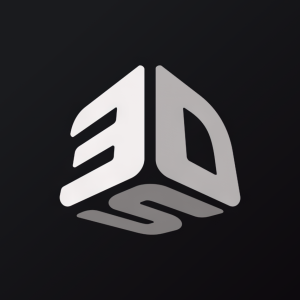3D Systems Advances Regenerative Medical Solutions for First-of-its-Kind Peripheral Nerve Repair
Rhea-AI Summary
3D Systems (NYSE:DDD) has achieved a significant milestone in regenerative medicine as its bioprinting technologies enabled FDA De Novo marketing authorization for a first-of-its-kind peripheral nerve repair solution. The company collaborated with French MedTech firm TISSIUM to develop COAPTIUM® CONNECT with TISSIUM Light, a bioabsorbable 3D-printed medical device utilizing unique photopolymer technology.
This breakthrough combines TISSIUM's biomorphic programmable polymers with 3D Systems' bioprinting expertise to create high-resolution, elastomeric biodegradable implants. The development builds on 3D Systems' nearly decade-long leadership in bioprinting, including its collaboration with United Therapeutics Corporation for human lung development. The global bioprinting market is projected to grow from $1.3 billion in 2024 to $2.4 billion by 2029.
Positive
- FDA approval received for first-of-its-kind peripheral nerve repair solution
- Successful development of unique bioabsorbable 3D-printed medical device
- Strategic partnership with TISSIUM expands medical applications
- Positioned in growing bioprinting market expected to reach $2.4B by 2029
Negative
- None.
News Market Reaction 1 Alert
On the day this news was published, DDD gained 7.91%, reflecting a notable positive market reaction.
Data tracked by StockTitan Argus on the day of publication.
- Collaboration with French MedTech company, TISSIUM, has resulted in FDA approval for unique 3D-printed polymeric solution for repair of peripheral nerve damage
- 3D Systems’ bioprinting system enabled production of a 3D-printed bioabsorbable medical device leveraging TISSIUM’s proprietary biomorphic programable polymers—a major industry milestone that sets new standard for high resolution elastomeric 3D-printed medical implants
- Builds on 3D Systems’ pioneering work to develop additive manufacturing solutions for regenerative medicine applications
- 3D Systems’ solutions accelerating additive manufacturing use in bioprinting—total market anticipated to reach more than
$2 billion by end of 2029
ROCK HILL, South Carolina, June 26, 2025 (GLOBE NEWSWIRE) -- Today, 3D Systems (NYSE: DDD) announced that its 3D bioprinting technologies have enabled FDA approval for the regenerative repair of peripheral nerve damage. For the last several years, 3D Systems has partnered with TISSIUM, a French MedTech company that is a pioneer in the development of biomorphic programmable polymers for tissue reconstruction, to develop a bespoke 3D printing solution for the repair of damaged peripheral nerves. Combining TISSIUM’s expertise and proprietary biomorphic programable polymers with 3D Systems’ ground-breaking regenerative medicine bioprinting technologies has resulted in the successful development of a fully bioabsorbable 3D-printed medical device for nerve repair utilizing a unique photopolymer. This device, called COAPTIUM® CONNECT with TISSIUM Light, is a first-of-its-kind, atraumatic, sutureless solution for the repair of peripheral nerves. Earlier this week, TISSIUM announced that the U.S. Food and Drug Administration (FDA) has granted De Novo marketing authorization for this solution. This milestone validates the polymer’s clinical potential and paves the way for its use across a broad spectrum of transformative applications. Its unique polymer characteristics enable the production of high-resolution, elastomeric biodegradable implants that are unique in the industry.
“This is a significant advancement in patient care,” said Scott Turner, vice president, advanced systems, 3D Systems. “It has been tremendously rewarding to work alongside the talented team at TISSIUM to design a complete 3D bioprinted solution that offers the potential for patients to recover from peripheral nerve damage. I truly believe this will redefine treatment paradigms and offer hope to individuals that have suffered from the effects of nerve damage in regaining their quality of life."
This milestone is yet another proof point of 3D Systems’ nearly decade-long leadership position in bioprinting. In 2017, 3D Systems entered into a joint development program with United Therapeutics Corporation, the goal of which is to establish an unlimited supply of human lungs, requiring no immunosuppression, allowing all patients with end-stage lung disease to receive transplants which will enable them to enjoy long and active lives. 3D Systems has focused primarily on establishing the 3D printing technology to produce scaffolds meeting the extreme precision and resolution requirements for a functional human lung and to do so in a manner that yields the physical, mechanical, and biocompatibility performance to influence cell behavior and reproduction required for extended use in the human body. Its Print to Perfusion™ process enables 3D printing of high-resolution scaffolds, which can be perfused with living cells to create tissues. Through the combination of bioprinting technology, biocompatible 3D printing materials, and a broad range of cell types including patient-derived cells, the Company’s biomedical engineers can construct patient-specific living tissues.
“Over the past several years, we have made phenomenal progress building upon Chuck Hull’s invention of 3D printing, and pushing its capabilities into new frontiers,” said Dr. Jeffrey Graves, president & CEO, 3D Systems. “Whether in our medical device business through the production of patient-specific implants and surgical solutions, or through the work our regenerative medicine team is doing, 3D Systems is making a profound impact not only on how healthcare is delivered, but on the quality of patients’ lives, and continues to solidify what I believe is an unparalleled role we play in advancing medicine with additive manufacturing applications. This latest accomplishment by TISSIUM, enabled by our unique 3D printing technology, is one more example of how 3D Systems is transforming patient care for a better future.”
According to Markets and Markets1, the global 3D bioprinting market was valued at
Forward-Looking Statements
Certain statements made in this release that are not statements of historical or current facts are forward-looking statements within the meaning of the Private Securities Litigation Reform Act of 1995. Forward-looking statements involve known and unknown risks, uncertainties and other factors that may cause the actual results, performance or achievements of the company to be materially different from historical results or from any future results or projections expressed or implied by such forward-looking statements. In many cases, forward-looking statements can be identified by terms such as "believes," "belief," "expects," "may," "will," "estimates," "intends," "anticipates" or "plans" or the negative of these terms or other comparable terminology. Forward-looking statements are based upon management’s beliefs, assumptions, and current expectations and may include comments as to the company’s beliefs and expectations as to future events and trends affecting its business and are necessarily subject to uncertainties, many of which are outside the control of the company. The factors described under the headings "Forward-Looking Statements" and "Risk Factors" in the company’s periodic filings with the Securities and Exchange Commission, as well as other factors, could cause actual results to differ materially from those reflected or predicted in forward-looking statements. Although management believes that the expectations reflected in the forward-looking statements are reasonable, forward-looking statements are not, and should not be relied upon as a guarantee of future performance or results, nor will they necessarily prove to be accurate indications of the times at which such performance or results will be achieved. The forward-looking statements included are made only as of the date of the statement. 3D Systems undertakes no obligation to update or review any forward-looking statements made by management or on its behalf, whether as a result of future developments, subsequent events or circumstances or otherwise, except as required by law.
About 3D Systems
For nearly 40 years, Chuck Hull’s curiosity and desire to improve the way products were designed and manufactured gave birth to 3D printing, 3D Systems, and the additive manufacturing industry. Since then, that same spark continues to ignite the 3D Systems team as we work side-by-side with our customers to change the way industries innovate. As a full-service solutions partner, we deliver industry-leading 3D printing technologies, materials and software to high-value markets such as medical and dental; aerospace, space and defense; transportation and motorsports; AI infrastructure; and durable goods. Each application-specific solution is powered by the expertise and passion of our employees who endeavor to achieve our shared goal of Transforming Manufacturing for a Better Future. More information on the company is available at www.3dsystems.com.
Investor Contact: investor.relations@3dsystems.com
Media Contact: press@3dsystems.com
1 Markets and Markets, 3D Bioprinting Market: Growth, Size, Share, and Trends (May 2024).







